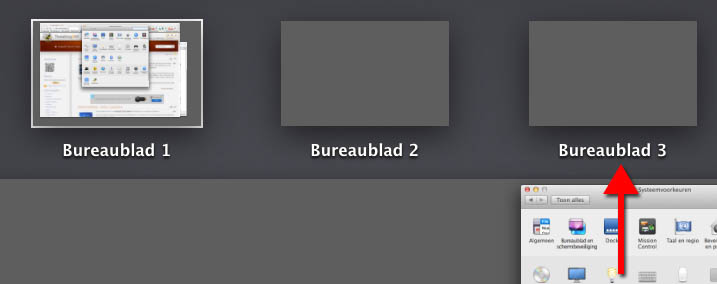If you encounter the macOS Big Sur problem where the installation fails due to low disk space, simply restart your Mac and press Control + R while it’s booting to enter the Recovery mode. If Mission Control in OS X El Capitan lets you manage your windows in real time, its spaces let you manage windows by organizing them in groups called spaces and switch from space to space with a keystroke or gesture. When you use spaces, only two kinds of windows are shown: windows from applications associated. An amazing program with a long, long, long mac heritage. It's way up there with Transmit by Panic and Interarchy as a file transfer program loved by long time Mac power users. Flow ($30) Never used it, but looks good from the screenshots. I really like the fact that it looks like Finder. I may have to give this one a try. OneButton FTP (Free).
- Mac Os Desktop Spaces
- Mission Space Recovery Mac Os Download
- Mission Space Recovery Mac Os X
- Mac Os Recovery Dmg
- Explore the world of Mac. Check out MacBook Pro, MacBook Air, iMac, Mac mini, and more. Visit the Apple site to learn, buy, and get support.
- With OS X 10.10 Yosemite, Apple disabled the application by default, but still allowed users to access it either as a hotkey overlay or its own separate space within Mission Control.
Start up from macOS Recovery
Determine whether you're using a Mac with Apple silicon, then follow the appropriate steps:

Apple silicon
Turn on your Mac and continue to press and hold the power button until you see the startup options window. Click the gear icon labelled Options, then click Continue.
Intel processor
Make sure your Mac is connected to the Internet. Then turn on your Mac and immediately press and hold Command (⌘)-R until you see an Apple logo or other image.
If you're asked to select a user you know the password for, select the user, click Next and enter their administrator password.
Reinstall macOS
Select Reinstall macOS from the utilities window in macOS Recovery, then click Continue and follow the onscreen instructions.
Follow these guidelines during installation:
- If the installer asks to unlock your disk, enter the password you use to log in to your Mac.
- If the installer can't see your disk or notifies you that it can't install macOS on your computer or volume, you may need to erase your disk first.
- If the installer offers you the choice between installing on Macintosh HD or Macintosh HD – Data, choose Macintosh HD.
- Allow installation to complete without putting your Mac to sleep or closing its lid. Your Mac may restart and show a progress bar several times, and the screen may be empty for minutes at a time.
When the installation is complete, your Mac may restart to a setup assistant. If you're selling, trading in or giving away your Mac, press Command-Q to quit the assistant without completing setup. Then click Shut Down. When the new owner starts up the Mac, they can use their own information to complete the setup process.
Other macOS installation options
When you install macOS from Recovery, you get the current version of the most recently installed macOS, with some exceptions:
- On an Intel-based Mac: if you use Shift-Option-Command-R during startup, you'll be offered the macOS that came with your Mac, or the closest version that is still available. If you use Option-Command-R during startup, in most cases you'll be offered the latest macOS that is compatible with your Mac. Otherwise you'll be offered the macOS that came with your Mac, or the closest version that is still available.
- If the Mac logic board was just replaced, you may only be offered the latest macOS that is compatible with your Mac. If you've just erased your entire startup disk, you may only be offered the macOS that came with your Mac, or the closest version that is still available.
You can also use these methods to install macOS, if the macOS is compatible with your Mac:
Mac Os Desktop Spaces
- Use the App Store to download and install the latest macOS.
- Use the App Store or a web browser to download and install an earlier macOS.
- Use a USB flash drive or other secondary volume to create a bootable installer.
Recovery Features
Come with a raft of advanced functionalities powering your Mac data recovery. Pick up core advantages for your recovery.
Mission Space Recovery Mac Os Download
Scan
ModeFile
FilterFile
PreviewBootable
MediaData
ProtectionRecover
to CloudRemote
IT support
ModeFile
FilterFile
PreviewBootable
MediaData
ProtectionRecover
to CloudRemote
IT support
Mission Space Recovery Mac Os X
Combine quick and deep scan into a straightforward process to help load files faster. Run more smoothly and be better focused on individual recovery tasks.
The filter feature helps you quickly locate lost data from a lot of scanning results. Enter keywords, sort exact files you hope to recover and save them to a safe place.
Preview all recoverable files, including photos, videos, and documents, to make sure the found files are what you want to recover.
Need to restore lost data, but macOS fails to boot? The bootable data recovery USB drive from EaseUS allows data recovery even when the system crashes down or becomes unbootable.
Two Protection Options available, Simple and Absolute protection, safeguard essential files. Once protected files get deleted, you can find and restore all of them directly.
Mac Os Recovery Dmg
Send your recovered data to cloud storage - Dropbox, GoogleDrive, OneDrive, another hard drive, USB, memory card, etc.
The best choice for any paid user with issues on data recovery. EaseUS specialists provide you a fast and easy way to troubleshoot your data loss cases.